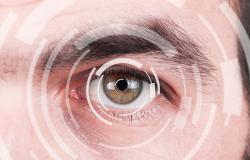User rating: 5 / 5
Following a successful launch of SpaceX’s 30th Commercial Resupply Mission (CRS-30), new science experiments and technology demonstrations for the space agency NASA are headed to the International Space Station, including studies of technologies to measure sea ice and vegetation in space. SpaceX’s Dragon resupply spacecraft, carrying more than 2.7 tons of cargo, launched on Thursday, March 21, 2024, on SpaceX’s Falcon 9 rocket from Space Launch Complex 40 at Cape Canaveral Space Force Station in Florida. If everything goes smoothly, the Dragon should be attached to the space station on March 23.
The 2.7 tons of cargo consists mainly of food, clothing and hardware for the space station. In addition, the Dragon supply vehicle also brings several new scientific experiments to the space station, such as the Nano Particle Haloing Suspension experiment. This will, for example, study the response of nanoparticles to electric fields and their use to aid in the synthesis of semiconductor materials known as “quantum dots”, which have the potential to vastly increase the efficiency of solar panel technology.
The unmanned Dragon also provides a new set of sensors for Astrobee robots to support automated 3D sensing, mapping and situational awareness. These systems could support future missions to the Gateway Space Station in lunar orbit and the lunar surface by enabling automated maintenance and surface scans with rovers. In addition, SpaceX’s spacecraft will deliver BurstCube. This is a small satellite designed to study gamma-ray bursts that occur when two neutron stars collide. This satellite could expand our coverage of the gamma rays, allowing us to better study bursts of both light and gravitational waves, or ripples in spacetime, detected by ground-based observatories.
Finally, the Dragon resupply vehicle will also provide sampling equipment for Genomic Enumeration of Antibiotic Resistance in Space (GEARS), an initiative that will test various locations of the space station for antibiotic-resistant microbes. In-flight gene sequencing could reveal how these bacteria adapt to the space environment, providing knowledge that could help inform measures to protect astronauts during future long-duration missions. These are just a few of the hundreds of studies being conducted aboard the International Space Station in the fields of biology and biotechnology, physical sciences, and earth and space sciences. Advances from this scientific research will keep astronauts healthy during long-duration space travel and demonstrate technologies for future human and robotic exploration beyond low Earth orbit to the moon through NASA’s Artemis campaign, leading up to the first crewed mission to Mars.
Tags: SpaceX brings #30th supply vehicle International Space Station






